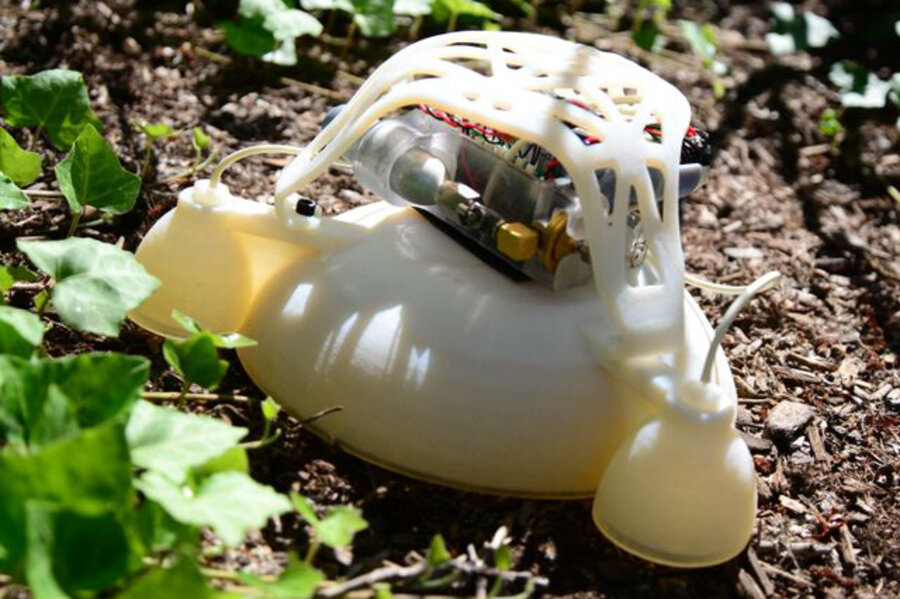Hopping 3-D printed robot has soft exterior, heart of metal
Loading...
People may think of Arnold Schwarzenegger when they hear of a robot with a soft outer body and hard metal underneath, but researchers working on just that type of machine say their design can actually make robots that are safer for humans.
Scientists at Harvard University and the University of California, San Diego have created the first robot with a 3D-printed body that transitions from an outer layer that is soft to the touch into a rigid metal core.
However it less resembles a terminator, and more a frog.
The robot, which is powered by a mix of butane and oxygen, is capable of making more than 30 consecutive untethered jumps. Its unique material composition allows it the strength to hop around without harm to its outer body.
“We believe that bringing together soft and rigid materials will help create a new generation of fast, agile robots that are more robust and adaptable than their predecessors and can safely work side by side with humans,” said Michael Tolley, a professor of mechanical engineering at UCSD, and one of the paper’s co-lead authors with Nicholas Bartlett, a PhD student in the Harvard Microrobotics Laboratory in Cambridge, Mass.
Professor Tolley said soft robots tend to be slow, and incorporating rigid components within it will allow greater structural integrity and faster movement that would still be safe for humans to work around.
Tolley and Mr. Bartlett say that the rigid layers of their design worked better with the electronic bits of the device and the softer layers worked better to absorb damage, resulting in a stronger and resilient machine. In experiments, the robot jumped more than 100 times and survived an additional 35 falls from a height of almost four feet. A rigid body design for the robot only survived a total of 5 falls from that height.
As for the applications for mixed rigidity robots? Bartlett pointed upward to space and alien environments like Mars or the moon, as well as dangerous search-and-rescue operations that wheeled robots could not access.
“These are unpredictable environments, and a soft robot that can bend and adapt to such environments and put up with a lot of punishment could be really useful,” Bartlett told Live Science.
For the design of the robot, the researchers looked to nature for inspiration, where combinations of hard and soft materials are common. Besides the aforementioned frog, the scientists also looked at sea life like octopi, sea stars, and shellfish.
"The octopus has an almost entirely soft body, but a rigid beak, and when you look at the interface between the body and the beak, it's not an abrupt transition, but a gradual shift between hard and soft," Bartlett said. "Evolution has had a head start on us for many millions of years — why not take tried-and-tested designs and use them for inspiration with our machines?"






